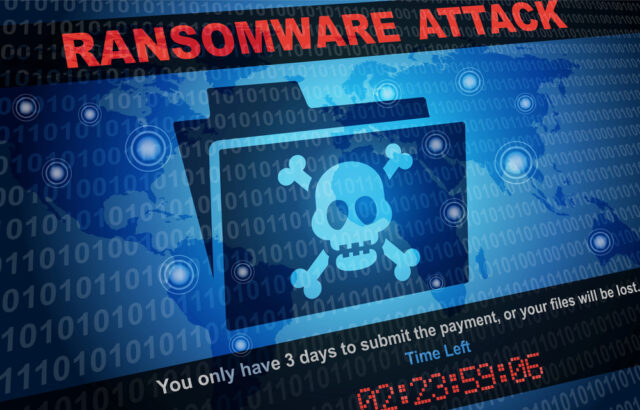The rising tide of ransomware and what it means for small and medium-sized businesses [Q&A]

Small and medium-sized businesses (SMBs) are facing an escalating onslaught of cyberattacks as they evolve in both sophistication and speed. Among the most insidious threats are ransomware variants like QakBot and Black Basta, which operate in the shadows, often slipping past the radar of law enforcement and the media.
The consequences of these attacks can be devastating, leaving SMBs exposed and unprepared, with the potential to disrupt operations, damage reputations, and incur significant financial losses.
We spoke with Andrew Costis, engineering manager of the adversary research team at AttackIQ, to dive into the specific risks these ransomware strains pose and provide actionable insights to empower SMBs in strengthening their cybersecurity defenses.
BN: Why are small and medium-sized businesses becoming a growing target for cyberattacks?
AC: Small and medium-sized businesses are becoming increasingly attractive targets for cybercriminals for several reasons. Many SMBs have limited resources to dedicate to cybersecurity, leaving them vulnerable to attacks. Additionally, there's a common misconception that cybercriminals primarily target larger enterprises, which may lead SMBs to underestimate their risk. As SMBs continue to rely more heavily on digital tools and online operations, their exposure to cyber threats grows, making them prime candidates for exploitation. Cybercriminals recognize this vulnerability and often exploit it, knowing that many SMBs lack the robust defenses that larger organizations typically possess.
BN: What makes QakBot and Black Basta particularly dangerous for SMBs?
AC: QakBot and Black Basta present unique dangers for SMBs due to their sophisticated methods of infiltration and the significant damage they can cause. QakBot, known for its stealthy techniques, often spreads through phishing emails, allowing attackers to gain access to sensitive data before deploying ransomware. Black Basta, on the other hand, is notorious for its rapid encryption capabilities, rendering files inaccessible and demanding substantial ransoms for their release. For SMBs, the potential for downtime and financial loss is severe, with many unable to recover from the impact of such an attack.
BN: How do these threats specifically target SMBs, and why do these variants fly under the radar of law enforcement and media?
AC: QakBot and Black Basta strategically target SMBs by exploiting common vulnerabilities, such as unsecured networks and weak employee security practices. Attackers often employ social engineering tactics to trick employees into clicking on malicious links, facilitating unauthorized access to systems. The attacks frequently go unnoticed by law enforcement and the media, in part because SMB breaches tend to be less publicized than those involving larger corporations. This lack of visibility contributes to a lack of awareness about the specific threats facing SMBs, leaving them underprepared for potential attacks.
BN: How can organizations proactively test and validate their security controls against ransomware attacks?
AC: To effectively bolster their defenses against ransomware, organizations must adopt a proactive stance towards testing and validating their security controls. This involves implementing a comprehensive cybersecurity preparedness strategy that anticipates potential infrastructure breaches and prepares for known threats. By utilizing established frameworks, such as MITRE ATT&CK, in conjunction with breach and attack simulation exercises, organizations can identify vulnerabilities before attackers exploit them. This approach minimizes the risk of successful ransomware attacks and fosters an environment of continuous improvement, ensuring that security measures adapt to emerging threats.
BN: What steps can these organizations take to enhance their ransomware resilience?
AC: Organizations looking to enhance their ransomware resilience should focus on continuous evaluation and optimization of their security controls. This involves systematically assessing existing measures to ensure their effectiveness against evolving threats while prioritizing investments in technologies that protect critical data and applications. Moving away from infrequent and costly manual testing, organizations can embrace continuous testing powered by automated platforms. This empowers them to verify their defenses against real-world threats efficiently and cost-effectively. Furthermore, it's crucial for security leaders to approach their defense strategies with a thoughtful plan, rather than solely acquiring the latest solutions. A reactive mindset can leave even the most advanced security controls vulnerable to the sophisticated tactics employed by ransomware actors.
In an era where cyber threats are becoming increasingly sophisticated, SMBs cannot afford to be passive in their approach to cybersecurity. Embracing a proactive stance involves not only understanding the unique risks associated with ransomware variants like QakBot and Black Basta but also committing to ongoing evaluation and enhancement of security measures. By investing in continuous testing and validation of their defenses, organizations can build resilience against potential attacks, ensuring their operational continuity and safeguarding their reputations. The time to act is now -- SMBs must rise to the challenge and take decisive steps to secure their future.
Image credit: arrow123/depositphotos.com
